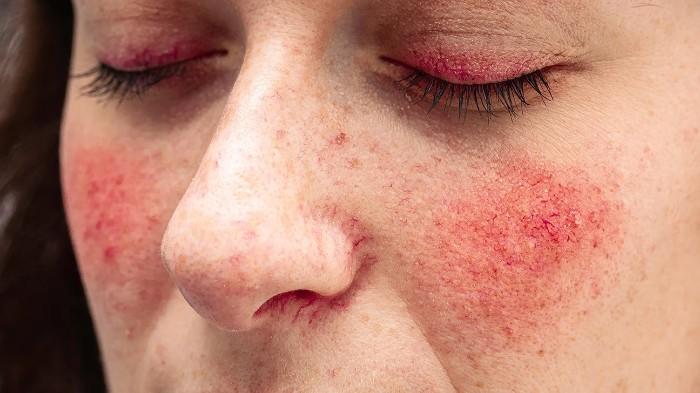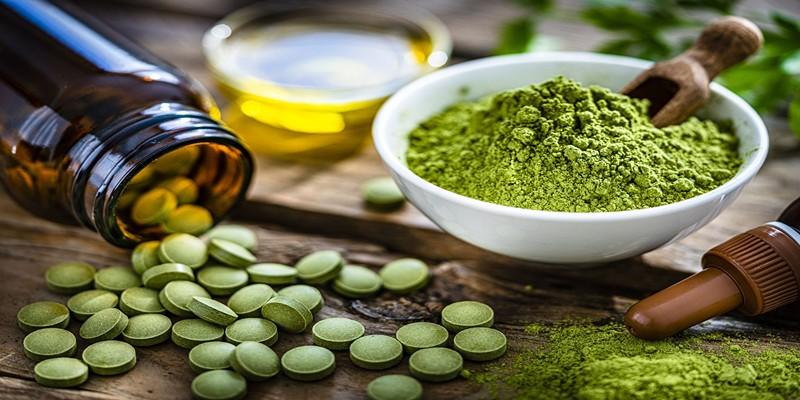Rosacea is a skin condition affecting an estimated 16 million Americans yearly. It's characterized by facial redness, swelling, and bumps similar to acne and other uncomfortable symptoms.
From flushing episodes to thickening skin, it's no surprise that people with rosacea often feel self-conscious about their appearance. Read on to learn more about this common dermatological disorder—including its types, causes, and potential treatments—so you can find relief from your troubles with rosacea.
Understanding Rosacea
Rosacea is a long-term skin condition that causes pimples, redness, and other symptoms on the face. People between the ages of 30 and 50 are commonly affected. Although the exact cause of rosacea is unknown, researchers think genetic and environmental factors may play a role. Sun exposure, hot meals, alcohol, and emotional stress are examples of common triggers.
There are four main types of rosacea: erythematotelangiectatic (ETR), papulopustular, phymatous, and ocular. ETR is characterized by persistent redness on the face and visible blood vessels. Papulopustular rosacea causes pimple-like bumps and redness on the cheeks, chin, nose, and forehead. Phymatous rosacea involves thickening skin and an irregular surface of the nose or other face areas. Ocular rosacea is characterized by eye irritation, redness of the eyelids, styes, and blurred vision.
The exact cause of rosacea is unknown, but some possible contributing factors exist. These include genetics, environmental triggers like sun exposure and extreme temperatures, certain medications, bacteria on the skin, and underlying vascular issues. Rosacea can also occur due to an over-reactive immune system or inflammation caused by stress or anxiety.
Common Symptoms of Rosacea That You Should Look Out For

Rosacea is a chronic skin disorder that affects the face, mainly the nose, cheeks, and forehead. It can cause redness, visible blood vessels, swelling, and bumps that may be filled with pus. Over time rosacea can progress and cause thickening of the skin on the chin and nose. Other symptoms include burning or stinging sensation, dryness, and itching.
Common types of rosacea include erythematotelangiectatic, papulopustular, phymatous, ocular, and granulomatous. Erythematotelangiectatic rosacea is characterized by redness, flushing, and visible blood vessels. Papulopustular rosacea causes redness with bumps and pimples, while phymatous rosacea is characterized by thickened skin with an uneven texture. Ocular rosacea affects the eyes, causing burning, itching, and dryness of the eyes.
Granulomatous rosacea is a rare form of rosacea that causes lumps and inflammation. The exact cause of rosacea is unknown, but certain triggers may exacerbate the condition, such as exposure to sunlight, stress, hot or cold weather, alcohol consumption, spicy foods, and certain skin care products. Certain medications like blood pressure and steroids are also linked to worsening symptoms.
Treatments for Rosacea
Rosacea is a chronic skin condition that affects the face and can cause redness, flushing, bumps, and thickened skin. Rosacea can range from mild to severe, but fortunately, treatments are available for all severity levels. Treatment can help control and manage the symptoms of rosacea.
- There are various forms of rosacea, each with a unique set of signs and symptoms:
- Blood vessels can be seen and there is redness and flushing in erythematotelangiectatic rosacea.
- Face pimples and redness are characteristics of papulopustular rosacea.
- The skin becomes thicker, the nose enlarges, and the facial surfaces become uneven as a result of phymatous rosacea.
- Eye inflammation, weeping, burning, stinging, and swollen eyelids are symptoms of ocular rosacea.
While the exact cause of rosacea is unknown, some common triggers can worsen symptoms. These include:
- Exposure to sunlight or wind
- Hot and spicy foods
- Alcohol consumption
- Stress
- Exercise
If you have rosacea, it is important to identify and avoid your triggers to help manage your symptoms. It is also important to use the right skincare products and gentle techniques when cleansing, exfoliating, and moisturizing.
Lifestyle Changes to Consider When Battling Rosacea

If you've been diagnosed with rosacea, making some lifestyle changes may help to reduce the symptoms and keep flare-ups at bay. Here are some tips for improving your skin health:
1. Avoid triggers that can cause a flare-up: Identifying and avoiding activities or products that irritate your skin is one of the best ways to prevent and manage rosacea. Common triggers include alcohol, hot beverages, spicy foods, caffeine, and stress.
2. Protect your skin from the sun: When going outside, make sure to wear sunscreen with an SPF of 30 or higher because exposure to the sun can make rosacea symptoms worse. A hat with a broad brim can help shield you from the sun's rays.
3. Keep your skin clean: Cleanse your face twice daily with a gentle non-soap cleanser and lukewarm water to remove dirt, oil, and debris that can aggravate rosacea symptoms. Avoid scrubbing or using harsh cleansers.
4. Moisturize: Moisturizing is an important part of any skincare regimen, but it’s especially important if you have rosacea. Use a moisturizer that won’t clog your pores, and consider applying it both in the morning and at night.
5. Avoid extreme temperatures: Hot weather and cold winds can cause rosacea flare-ups, so limit your exposure to extreme temperatures.
FAQs
What deficiency causes rosacea?
Copper deficiency has been linked to rosacea, but more research is needed. Other deficiencies in the condition include Vitamin B12, zinc, and Vitamin D.
How can I reduce rosacea naturally?
Caring for your skin is the best way to reduce rosacea naturally. Ensure you regularly cleanse, moisturize, and use sunscreen with an SPF of 30 or higher outdoors. Certain dietary changes can also help, such as avoiding spicy foods and drinking green tea. Lastly, reducing stress levels may help improve symptoms.
Corticosteroids help reduce rosacea symptoms.
Corticosteroids can be used to treat inflammatory rosacea but should only be taken under the supervision of a healthcare professional. Long-term use of corticosteroids is not advised as it may cause side effects.
Conclusion
Many people deal with Rosacea daily, which cannot be easy to manage. However, getting rosacea under control and maintaining healthy skin is possible with the right treatment and lifestyle changes. Taking the time to investigate natural remedies may also be beneficial in relieving any symptoms associated with rosacea. Finally, by practicing healthy skin habits and following the advice of your dermatologist, you can cope with Rosacea while also managing your overall health.




